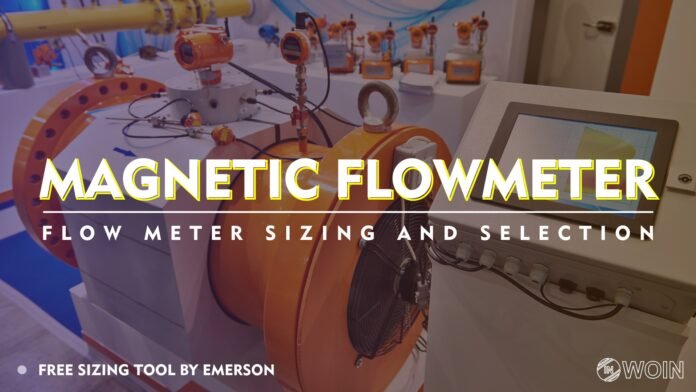Proper Sizing of Magnetic type flowmeter is very important. In this article, I am sharing with you Free Sizing Tool for Magnetic Type Flow Meter.
Introduction
Before selecting the magnetic type flowmeter, we need to consider the proper sizing of the Magnetic flowmeter.
Proper sizing of the Magnetic Flowmeter is very important before selecting the Right Mag Meter for Industrial Application.
Before we go deep dive into the Sizing of the Magnetic flowmeter, I want to share with you basic knowledge regarding it. I will share an in-depth knowledge of Magnetic Flowmeter in my upcoming Article.
Working Principles of Magnetic Flowmeter
As you probably know, the Magnetic flow meter works on Faraday’s Law of Electromagnetic Induction.
When a moving conductor is passing through magnetic field it generates Electromagnetic Force in Conductor
Michael Faraday
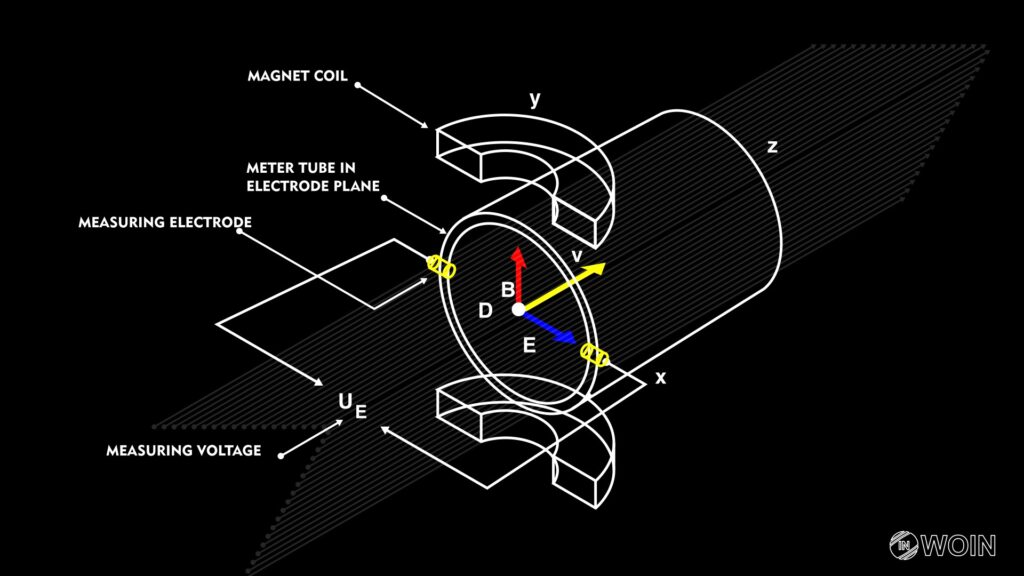
According to the above image, you can visualize how a magnetic Flowmeter works. When conducting fluid passes through the magnetic flow meter it comes into contact with the magnetic field generated by the Magnetic coil.
The below Equation shows the relation between velocity versus Magnetic field.
Uo ∼ B ⋅ v ⋅ D
UO – Voltage Generate between Electrodes, B – Magnetic Field, V – Fluid Velocity, D – Pipe Diameter
Qv = A * V
QV – Volumetric Flow Rate, A – Area, V – Velocity
Uo ∼ QV
1) UO – Voltage Generate between Electrodes, 2) QV – Volumetric Flow Rate
Uo = K*QV
1) UO – Voltage Generate between Electrodes, 2) QV – Volumetric Flow Rate, 3) K Proportionality Constant
Due to charge separation, voltage has generated perpendicular to the magnetic field that you see from the image. and this voltage is picked up by measuring electrodes that show yellow color in the image.
If you want to see visualize the system and how it works then I will recommend watching the below video by Endress and Hauser. One other free resource is shared at the end of the article.
Now you get a general idea about the magnetic flow meter and as I said I will write an in-depth article on the Magnetic flow meter.
Magnetic Flowmeter Sizing
Magnetic Sizing is very important for selecting the right Magnetic flow meter because accuracy is dependent on the flow rate range.
The accuracy of the Magnetic flowmeter is decreased when the flow rate is decreased. You can clearly see this graph.

By using Magnetic Flowmeter sizing you can determine minimum flow requirements for achieving the desired accuracy. I found a free sizing tool for a Magnetic flow Meter.
I will give you step by step guide on how to select and use the magnetic flowmeter sizing tool by Emerson.
By clicking the button below, you will be redirected to the Magnetic flowmeter sizing tool by Emerson.
Step 1 | Mode Selection
When you have redirected to the Magnetic Flowmeter Sizing tool first thing you have to convert Advance Mode to Basic Mode for this you have to click the button highlighted in the red box.
And you have to fill in and select the fluid state and type of fluid used in your application. I am selecting water according to my requirements.
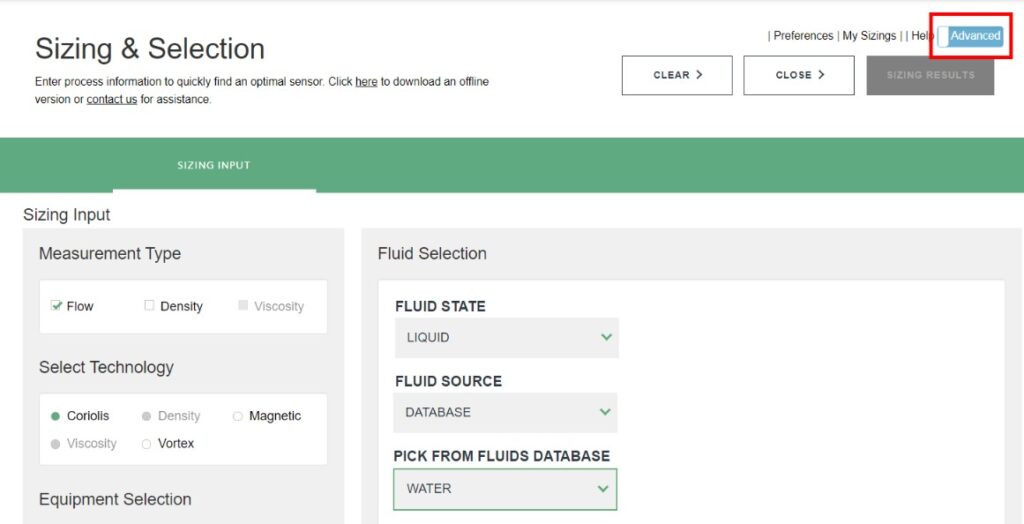
Step 2 | Technology Selection
Now you have to select technology and select Magnetic technology and we will discuss other technology in another article. After selecting technology press the Next button.
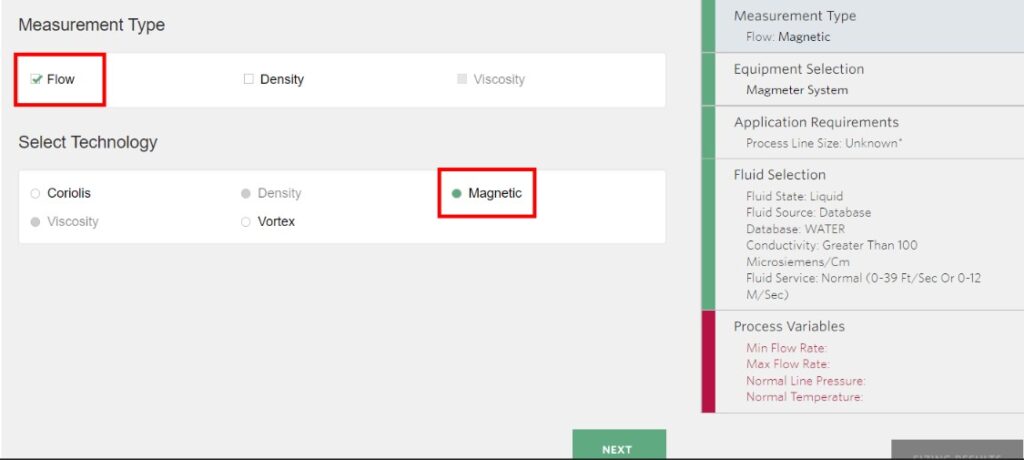
Step 3 | Equipment Selection
After Selecting technology for the flow meter, you have to select Equipment type and for this scenario, I am selecting Mag meter System. After selecting Equipment Press the next button.
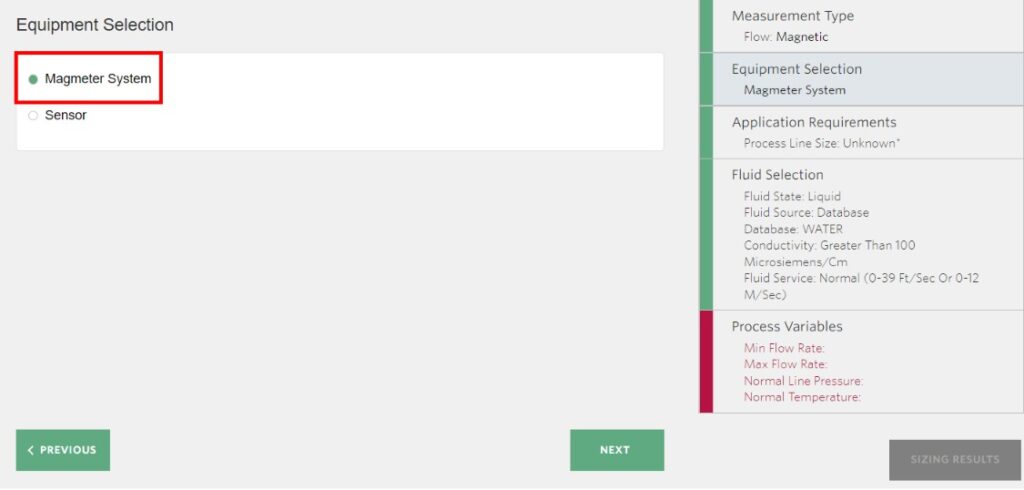
Step 4 | Application Requirements
When you select equipment and press the next button now you have to select application requirements.
I am selecting according to my requirements you can customize according to your need like Line size and other parameters.
I am using my practical requirement for one of my projects. And if you don’t know anything it will help you to understand the whole sizing process. Press the Next Button.
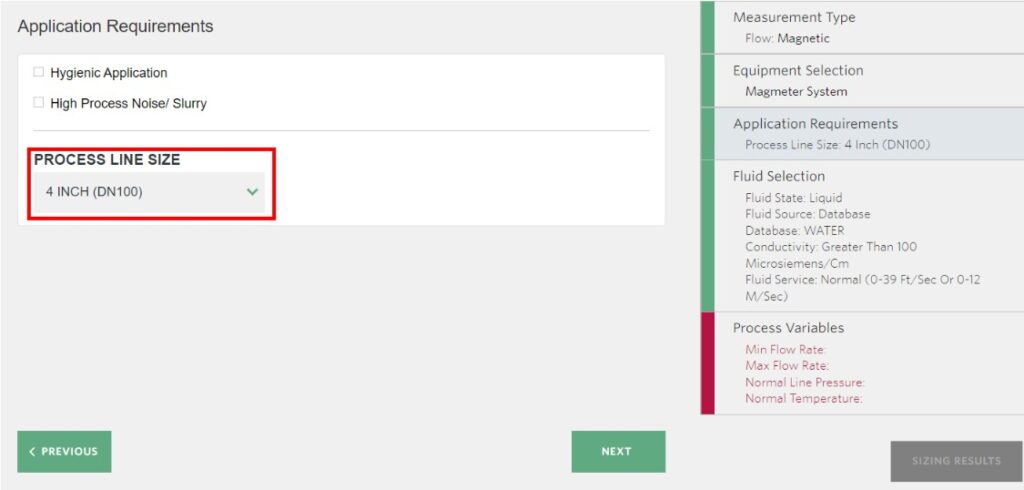
Step 5 | Application Requirements
Now you have to fill in-process data according to your requirements. I am filling in data according to my project requirements. Flow rate and Pressure Data are very important data to fill.
Fluid density data is automatically filled once you fill the data of Flow Rate, Pressure, and Temperature. and you can also able to change it according to your process requirements.
Once you did now you just click on Sizing Results and wait a bit to see the results after the page is updated with Sizing Results according to your requirements.
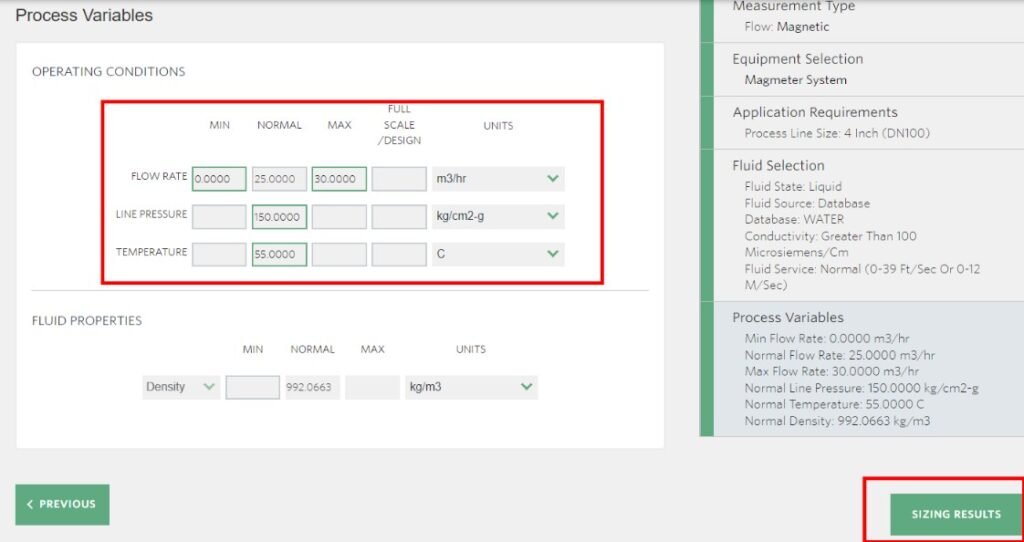
Step 6 | Magnetic Flowmeter Results
When the report is generated, you have to look at a table that shows flow rate, Accuracy, and Velocity data.
The ultimate purpose of Magnetic Flowmeter sizing is to find the accuracy of the Mag meter according to different flow rates.
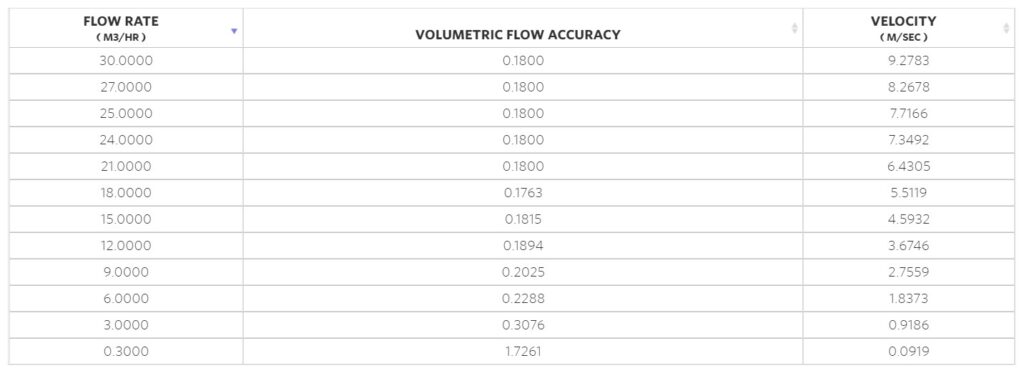
Step 7 | Flow Rate vs Accuracy Graph
Apart from the Data table, you will also find a graph that visually represents the above data table. and by looking at the graph you can easily find out that magnetic flowmeter accuracy is decreased when the flow rate is decreased.
You can also find the flow rate cutoff threshold for accuracy. When you see the graph accuracy remains Constant until it reaches the cutoff flow rate below the cutoff flow rate accuracy is dramatically decreased.
For my application, the cutoff flow rate is 3.7 m3/h above this flow rate and I am able to achieve the desired accuracy.
You can also download your sizing report and graph that generates according to your requirements.
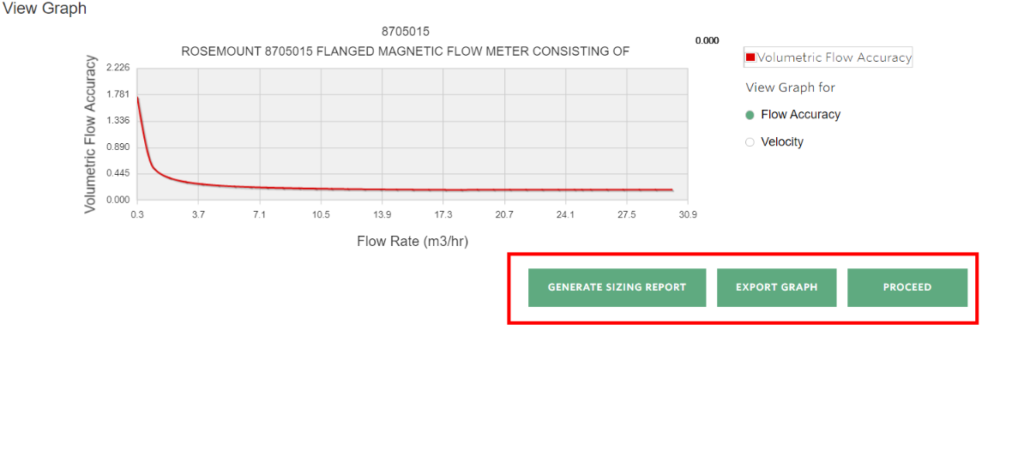
EndNote
As you know every measurement application has a minimum accuracy requirement.
The ultimate goal of Magnetic flowmeter sizing is to find the Minimum flow rate that passes through the Magnetic meter that measures within minimum accuracy requirements.
And as I said that I will share additional resources related to developing a clear understanding of Magnetic Flow Meters. Here it is.
If you find this post interesting you will also like my previous article on the list of most commonly used standards in instrumentation.


